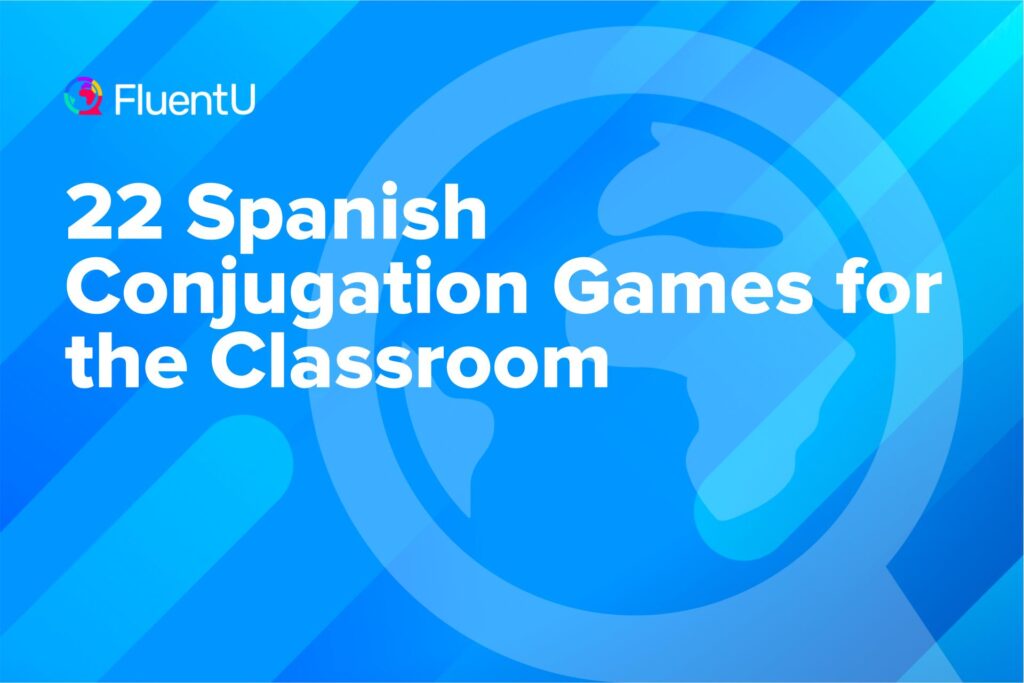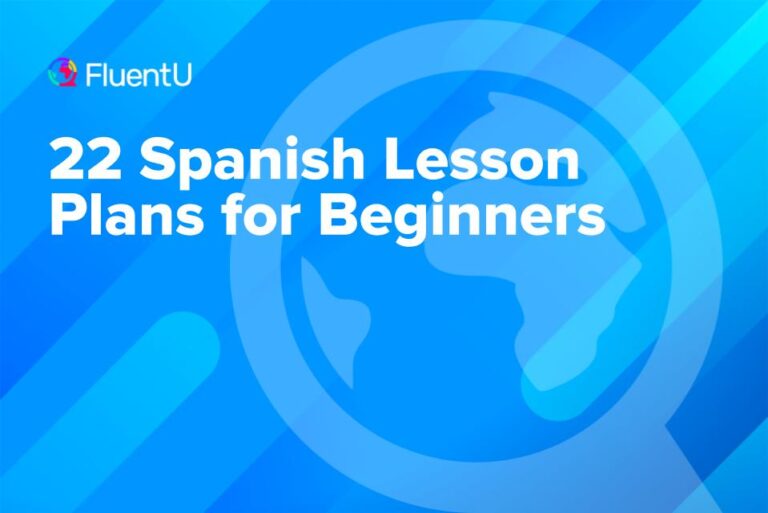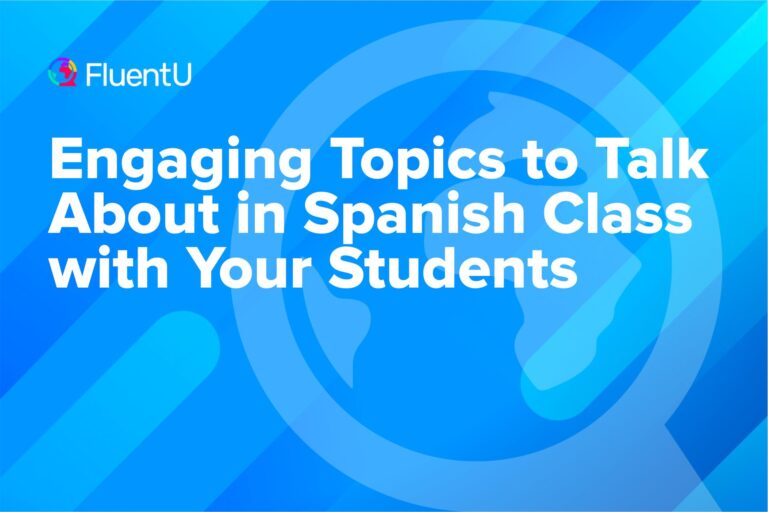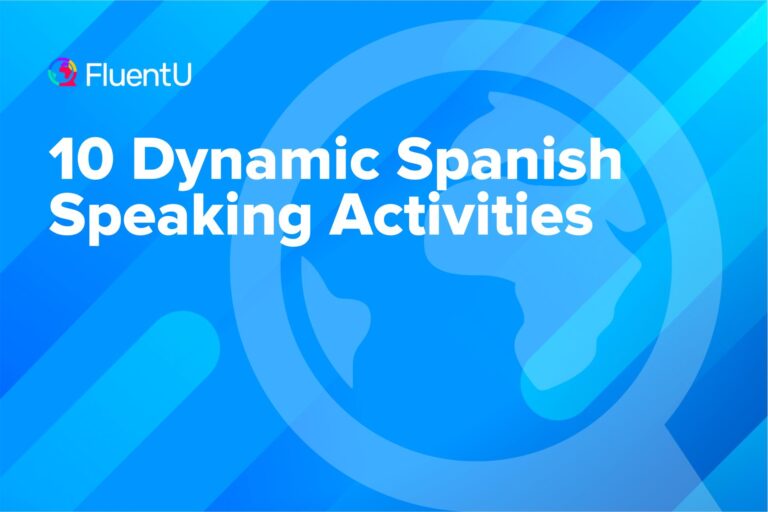Contents
- 1. Snakes and Ladders
- 2. Charades
- 3. The Grid
- 4. Taboo
- 5. Weather Forecast
- 6. Look Around Competition
- 7. The Verb Game Show
- 8. Play Online Games
- 9. Baseball
- 10. One Minute Madness
- 11. Bazinga!
- 12. Dice Tic-tac-toe
- 13. Basketball Relay
- 14. Fiesta
- 15. White Board Racing
- 16. Conjugation Ball
- 17. Verb Lottery
- 18. Person, Tense, Infinitive!
- 19. Twenty Questions
- 20. Jeopardy
- 21. The Commands Game
- 21. Indicative or Subjunctive?
- 22. Verb Battleship
- Other Activities to Teach Verb Conjugation
- Why Teach Spanish Verbs with Games?
- Tips for Teaching Verb Conjugations
22 Spanish Conjugation Games for the Classroom

Most Spanish students don’t love learning about verb conjugations, and often enough, it’s a teacher’s least favorite concept to introduce in the classroom as well. Luckily, games make the process fun and easier for both sides.
Explore 22 entertaining yet effective games that will help your students actually enjoy learning about Spanish verb conjugation.
Download: This blog post is available as a convenient and portable PDF that you can take anywhere. Click here to get a copy. (Download)
1. Snakes and Ladders
Print out a “Snakes and Ladders” board and write an infinitive in Spanish in each square as well as the conjugation in English. For example, ayudar (to help) – I help.
Students have to conjugate the verb correctly when they land on that square.
2. Charades
Get a list of activities or verbs you’ve been using during the lesson and ask students to act out the action and indicate what ‘person’ or tense it is, while the rest try to guess the correct conjugations.
3. The Grid
This is one of my personal favorites. Prepare a 3×3 table with a conjugated verb on each square and stick it outside your classroom.
Students work in small groups or pairs, with one of them running outside to memorize the grid and then coming back in to copy the words down in the correct positions, while the others try to translate the conjugated verbs correctly.
4. Taboo
Create a set of cards with a conjugated verb on each of them. Students take turns telling others the verb meaning in English, while the teammates try to translate it correctly.
This game is most useful when applied to specific vocabulary that has been previously studied.
5. Weather Forecast
One of the best ways to teach students about irregular verbs is by teaching them the weather. This topic uses a variety of common verbs such as estar, ser, haber and hacer.
Why not get your students to prepare a weather forecast in different tenses? They can act it out, prepare the maps to display and can either film themselves or be filmed in class. They will love it!
6. Look Around Competition
Making students stand up and run around the room is a great way to step away from the traditional grammar worksheets.
Put up some infinitives in Spanish and English on the walls and give your students a list of verbs in English (for example, “we play”).
Students run around finding the right infinitives and then conjugate them correctly on their lists.
7. The Verb Game Show
This game could be a fantastic way to practice conjugations as well as familiarize your students with great verb apps, like Verb Trainer.
Individually, in pairs or groups, students are given verbs to translate and conjugate in 30 seconds, with only the help of the app. They will then get points for every correct answer.
Allowing your students some time to explore will give them a new and useful resource that enables them to be more independent.
8. Play Online Games
Another great idea is to exchange the grammar worksheets we set for homework with online games like the ones in Conjuguemos or the Spanish Burrito Builder Game.
9. Baseball
Set up your classroom so that you have four desks in a diamond shape (these four desks will serve as your bases).
Write whatever questions you want that have to do with verbs on pieces of paper and place them in a hat or bucket.
Divide your class into two teams, and pick one to be the batting team and the other to be the fielding team to start.
The game starts off with the first person on the “batting” team rolling the die. The number they roll corresponds to the type of hit they’ll get if they answer the chosen question correctly.
If they roll a one, a right answer is worth a single. A two is a double, a three is a triple and a four is a home run (if students roll a five or a six, they roll again).
Now that the die has been rolled, the batter must randomly pick a question out of the cap, and then give it to you to ask out loud.
If they get the question right, it’s a base hit and they get to move to the base that corresponds to their roll.
If they get it wrong, it’s an out—and the fielding team can answer. If the fielding team gets it right, it’s a double play: two outs instead of one!
Every time a student makes it back to home plate, it’s a run for the batting team. After every three outs, the teams switch sides. Once the game is over, simply tally up the runs to find your winner.
10. One Minute Madness
In this game, students can work by themselves or with a partner. They’re going to be forming sentences while racing against the clock.
Give each student or pair two question words (interrogatives), six subjects (numbered one to six) and six infinitives (also numbered one to six).
With all their materials in hand, give your students a combination of three numbers: one corresponds to the subject, one to the question word and one to the infinitive.
Start the timer so that the students have just one minute to write as many sentences as they can using the subject, the correct verb form and any additional information.
The student or team with the most correct sentences wins.
11. Bazinga!
First, prepare your Bazinga! cards based on the guidelines below.
Divide your class into two teams and write the name of each student on index cards and put them into separate containers for each team.
Each round, you’ll pick one name out of the hat for each team. The selected student for each team answers one verb-related question per round.
These questions could require a conjugation, sentence completion or a complete answer. If they get it right, they get a point and a Bazinga! card, and if they get it wrong, the other team has a chance to steal.
Here’s the fun part: the Bazinga! cards are divided into three categories. These are:
- Points cards: You can either take a point from the other team, double your point total, take two points from the other team and add them to your score, or just add two points to your score. Feel free to change the points cards as you wish to spice up gameplay even more!
- Action cards: The action cards allow for teams to switch a player, or to move a player from the winning team to the losing team. These options can help keep things fair and avoid blowouts.
- Bazinga! cards: These cards allow you to do some serious damage to your opponent’s odds of winning. If you pull a Bazinga! card, that means that you can take half the other team’s score!
As you can probably guess, the team with the most points at the end of the game is the winner.
12. Dice Tic-tac-toe
In Dice Tic Tac Toe, small groups will get a die and a worksheet with six different tic-tac-toe boards. Each space in the tic-tac-toe board should have a different subject or verb definition.
Every board will correspond with a number and a verb (give them a list so they know which number goes with which verb).
The first student rolls the die and chooses a subject that corresponds with the roll. For example, if they roll a three, they pick a subject from the third tic-tac-toe board.
They then conjugate the verb on a piece of paper and hand it to their partner. If they’re right, they get to mark that space with an X or an O. If they’re wrong, the spot remains open.
Each student takes turns like this until all the boards have a tic-tac-toe on them.
13. Basketball Relay
This is another verb review game that students will love!
To get started playing Verb Ball, you’ll need to divide the class into two teams. Set one team at the writing board, and the other about 10 feet away from a basket.
Give the students at the board a list of verbs, and give the other group a few balls. The second group will try to make as many baskets as possible while the first group conjugates verbs (the time is up when all the verbs are done).
Then, they switch. The team with the most baskets wins.
14. Fiesta
Unlike the other games on this list, Fiesta requires a little bit of creative design skills. You’ll need to create a board that is similar to Candy Land, with boxes leading to a finish line.
Within the boxes, you will put a subject and verb conjugation. The students take turns rolling the die, and they move their pieces according to their roll. They must properly conjugate what is in the box they land on.
If they get the conjugation right, they stay on that spot. If they get it wrong, however, they move their piece back the same number of spaces as they rolled!
15. White Board Racing
You can play this game with either pairs or groups of less than five.
In the pair version of White Board Racing, each pair should receive a whiteboard. Then, you call out a verb and subject and the students have to race to conjugate the verb accordingly.
The first pair that holds up the correct answer gets two points, and the second pair to do so gets one point. The pair with the most points at the end of the game wins.
In the group version, it’s a relay race. You give each group a board and call out the verb.
Each student writes down the correct conjugation for one of the subjects in the given tense/mood and passes it to the next person in line.
The last player to write down a conjugation holds up the board, and the first team to correctly complete the relay gets the point.
16. Conjugation Ball
Start by holding a ball in front of your students and picking one of them. Throw the ball so that the student catches it. When this happens, tell him or her to conjugate a verb in a specific person in a specific tense.
For example: “Second-person singular of the present simple of the verb correr (to run).”
If the student gets it right, they can choose the next contestant, throw them the ball and ask them to conjugate a verb in a specific person and tense.
When a student does not answer correctly, the ball goes back to you and the student gets eliminated. The goal of the game is to be “the last man standing.”
The possibilities with this game are practically endless because you can personalize it to fit the specific needs of your students every single time. And all you need is a ball!
17. Verb Lottery
This is another fun and easy game your students will love. You just need a big empty jar or a small trash bin and a group of students who want to make things hard for their fellow learners.
Ask your students to write on five individual small pieces of paper five different people, tenses and infinitives. For example:
- Third-person singular, present perfect, cantar (to sing).
- Second-person plural, imperfect, vestirse (to get dressed).
- First-person plural, present simple, ir (to go).
Fold the pieces of paper and put them in the jar. Pick a student and ask them to take one piece of paper from the jar and give you an answer.
If they answer correctly, they continue in the game and get to pick the next lucky winner. If they fail, you pick the next student. Go on until there is only one winner.
18. Person, Tense, Infinitive!
This game is very similar to the previous two, but it works the other way around.
Now it is you who tells a student a conjugated form of a verb (for example comeremos—we will eat), and they have to tell you the person, tense and infinitive of the verb you have just given them.
So for comeremos, the answer would be: “First-person plural of the future simple of the verb comer (to eat).”
This game may be a little bit difficult for beginner learners of Spanish who are still struggling with concepts such as person, tense or infinitive, so either make sure they know what they are beforehand or use this game only with intermediate and advanced students.
You can make this game more challenging by adding the subjunctive and the imperative to it.
19. Twenty Questions
We all know and enjoy the Twenty Questions game, but not a lot of us have used it to teach verb conjugation to our students.
Start by choosing a conjugated form of a verb (let’s use bailé—I danced), then write the infinitive on the blackboard and let your students ask you questions about it. Their goal is to guess exactly the person and tense you have chosen.
If your students are beginners, allow them to ask in English, but for intermediate and advanced learners, use only Spanish.
The questions can only be answered with Sí or No, so make sure they understand this beforehand and ask suitable questions.
If you are playing this game with them for the first time, give them a couple of sample questions so that they get the hang of it. Here you have some:
- ¿Pertenece al indicativo? (Does it belong to the indicative mood?)
- ¿Está conjugado en imperfecto? (Is it conjugated in the imperfect tense?)
- ¿Es una segunda persona? (Is it a second person?)
Every time a student asks a question, you have to answer Sí or No and give them the chance to give you an answer.
The first student to guess the correct answer has to choose the next verb form and will be the one answering their classmates’ questions.
20. Jeopardy
To play Jeopardy, the only thing you need is a Jeopardy board you can make yourself either online or with paper.
You can personalize the board to fit your needs, so depending on the tense or tenses you want to practice with your students, you can have fewer or more categories and questions.
The categories can be different verb tenses or different moods, while the questions can range from fill-in-the-blank exercises to Yes/No questions.
If you are not familiar with this game, you should bear in mind that each question has a value, and the bigger the value, the more difficult the question should be.
In turns, each student or group will choose a category and a question. They can choose the category and value they want as long as the question has not been answered yet.
If they answer correctly, they get the number of points the question is worth. If they don’t, the next person or group gets the chance to answer and get the points. If no one can answer correctly, there are no points awarded for that question.
The person or group that gives the correct answer keeps the turn and gets to choose the next category and value. The game goes on until all the questions are answered.
The group with the most points wins.
If you need a little bit of inspiration, here you have some sample questions:
- El niño _______ (comer, imperfect) verduras. (The boy was eating vegetables.)
- Primera persona del singular del pretérito perfecto del verbo caminar. (First-person singular of the present perfect of the verb to walk.)
- ¿Cuál es la segunda persona singular del imperativo del verbo ir? (What is the second-person singular of the imperative of the verb to go?)
- ¿Es pedir un verbo irregular en presente? (Is pedir an irregular verb in the present tense?)
21. The Commands Game
This game is perfect for teaching or reviewing the imperative, but you can change its name if you want your students to practice another tense.
Start by writing a list of infinitives on the blackboard. Pick a student and ask them (in Spanish) to do the action of the first infinitive (for example, if the infinitive is abrir—to open, tell them Abre tu libro—Open your book).
If the student opens their book, they get a point. Next, that same student needs to pick a different infinitive from the list and ask, again in Spanish, one of their classmates to do something.
If the student picking the infinitive conjugates the verb correctly, they get an additional point, and if the other student does the action correctly, they get a point and have to choose another infinitive and another classmate.
The game ends when all the infinitives have been used. The person with the highest number of points at the end is the winner.
21. Indicative or Subjunctive?
This game is for advanced students, but you can change its name to Preterite or Imperfect, or even Present Simple or Present Perfect and use it with your beginner and intermediate learners.
For starters, write sentences on individual sheets of paper (one sentence per student). Each sentence must be lacking a conjugated verb, and the answer can be any person and tense of the indicative or the subjunctive.
The sentences can be similar to these:
- Quiero que tú _______. (I want you to _______.)
- _______ comprar unas naranjas. (I _______ to buy some oranges.)
- Mamá y yo _______ al cine ayer. (Mum and I ________ to the cinema yesterday.)
Next, write each answer on a piece of paper and give one to each student. Stick the sentences on different parts of the classroom and give your students 10 minutes to find the sentence for which the answer they have is correct.
22. Verb Battleship
Sit your students in pairs and ask them to draw 6×10 grids. Outside each of the 6 columns they have to write one of the 6 persons of a verb, and outside the 10 lines they should write 10 verbs.
Each pair can choose their own verbs, but you can also choose to write 10 verbs on the blackboard so that all the students practice the same verbs.
Next, give one tense to each pair. Ideally, each pair will have a different tense, but if you need to repeat any tense, make sure the groups are far enough not to overhear each other.
When all the pairs have their verbs and their tenses, they can start placing their battleship on the grid (each member using their own grid). They need to place:
- 4-square boat x1
- 3-square boats x2
- 2-square boats x2
- 1-square boat x1
The members of each couple will try to sink the other member’s battleship, but in order to do that they will have to conjugate the verb corresponding to the line they have chosen in the person of the column they have chosen.
For example, if a student wants to choose position 2×7 (where 2 is the second person singular and 7 is the verb in line 7), they will have to conjugate that verb in the second person singular in the tense you have given them.
If a student hits an opponent’s battleship, they can go on attacking until they either miss the battleship or get their answer wrong. The person to sink all the opponent’s boats first wins.
If you want your students to play more rounds, make sure they use different verbs and a different tense each time.
Other Activities to Teach Verb Conjugation
Teach with Videos
I highly recommend bringing videos into the classroom to provide a change of pace and to make your lessons more engaging for young learners.
“ConjugationsBack” is great for its explanations and catchiness as well as its introduction to complex grammar.
Another source of engaging videos is FluentU, which has many authentic videos like movie trailers, news segments, vlogs and music videos that will demonstrate verbs in action.
FluentU takes authentic videos—like music videos, movie trailers, news and inspiring talks—and turns them into personalized language learning lessons.
You can try FluentU for free for 2 weeks. Check out the website or download the iOS app or Android app.
P.S. Click here to take advantage of our current sale! (Expires at the end of this month.)

Each video has interactive subtitles that let you hover or click on a word to see its definition. Even better, these definitions are contextual, so students won’t just see a list of meanings—they’ll actually see the specific meaning that’s relevant to the context, as well as detailed information about the form, conjugation and mood of any verb.
Adding these words to flashcard decks is another way to practice conjugation, as students will be tested on the specific form of the word that they save.
Educational Posters
Students can consolidate their learning and understanding of conjugations by creating posters in which they explain how to change verbs appropriately into different tenses.
They can be fantastic displays for your room and students will probably refer to them to regularly get some help.
Read Spanish Books
Reading Spanish literature as a class is a great way to have your students see Spanish verb conjugation in action.
Why Teach Spanish Verbs with Games?
Adding Spanish verb games to your lessons brings learning to life for your students. Games make learning Spanish meaningful, useful and incredibly engaging.
Students will be more motivated to learn when they feel that learning has an immediate effect, even if it’s just in a fun little game.
They’ll also be forced to think on their feet– a skill that comes in handy at test time and beyond.
Games also tend to bring classmates together in a spirit of collaboration. Every student is motivated to push themselves to learn, but they’re also motivated to push their peers to learn.
Tips for Teaching Verb Conjugations
Stay Positive
Our students trust us, so if we tell them verb conjugations are difficult, that is exactly what they’ll believe.
Then our battle as teachers is already lost! We’ll walk into a classroom of already defeated students who won’t even bother trying because they don’t really expect to succeed.
Describing something as ‘difficult,’ rather than challenging, builds a set of expectations that will hinder students’ learning and the love of learning itself.
So, let’s opt for ‘challenging’ instead of ‘difficult.’ This reframes our perspective as students will see this as something that can be rewarding once overcome, rather than an impossible task.
Teach the Basics
How can you expect your students to conjugate verbs if they don’t even understand what a verb is?
I suggest investing some of your precious time in reinforcing basic grammar in their native language. Do they know what a verb is? Can they understand what a tense means?
If the answer to these and similar questions is no, there’s your starting line. There’s no point in running if they can’t walk yet.
Simplify Your Methods
When I was learning French, my first teacher insisted on us reciting verb endings from memory every week.
While this was useful for those of us who did manage to memorize small patterns, some found it completely discouraging.
This year, I decided to put the whole set of endings and conjugations for different tenses up on the walls. I am still amazed by the impact this has had on my teaching and my students’ learning.
Instead of teaching one tense at a time, linking them with different topics, I decided to spend a lesson showing my students how to use the display to conjugate tenses.
By the end of that fifty-minute lesson, my eleven-year-olds were able to change verbs in the present, past and future tenses.
Evaluate your teaching methods and try to find anywhere that you can simplify your process to make things easier for your students.
Encourage Trial and Error
The best way for students to learn is to try things out for themselves. Remind them that they will make mistakes, but that’s okay.
You can even give them a silly story of a mistake that you’ve made so they realize that it’s not a bad thing!
If you give students enough opportunities, they will eventually learn that the ‘I form’ in the present tense takes an –o…without having to go home and spend hours memorizing.
If you need more classroom games to help students learn Spanish, check out this post:
43 Fun Spanish Activities and Classroom Games | FluentU Spanish Educator Blog
Spanish activities and games add variety to your lessons and encourage your students to speak Spanish. There are so many fun Spanish activities to choose from too, such as…
If you’re looking to engage your students and increase their retention levels, these games can be a lifesaver.
Whether they’re struggling with basic conjugations or something a little more complex, these games are a great way to blend learning verbs with having fun!
Download: This blog post is available as a convenient and portable PDF that you can take anywhere. Click here to get a copy. (Download)






